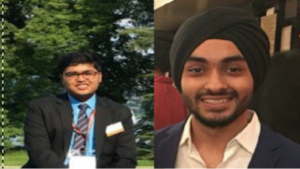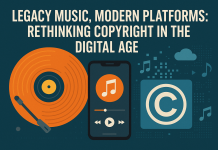We are pleased to bring to you our next guest post by Mr. Arnav Bose and Mr. Gursimar Singh Setia who are currently 3rd year law students pursuing a BA LLB course at West Bengal National University of Juridical Sciences, Kolkata. Both of them are part of NUJS Society of Intellectual Property and Technology Law and Mr. Bose serves as the Editor of their monthly magazine.
The protracted transfer saga of football superstar Paulo Dybala, who was linked with multitude of clubs, culminated in an abject breakdown of negotiations owing to issues pertaining to image rights.[1] This is not the first instance where image rights have been a significant obstacle in the football world. For example, back in 2016, there was an inordinate delay in the appointment of Jose Mourinho as the Manager of Manchester United FC as his image rights where vested with his former employer Chelsea FC.[2] Image rights, a subset of personality rights, have become significant in recent years due to the increasing commercialization of sports. Consequentially, football agents have had the opportunity to exploit players at the early stages of their careers by cashing-in on their brand value by selling their image rights. This issue has been extremely pertinent in the modern game as it acts as an impediment in the transfer market where third-party owners influence decisions against the interest of the player.
Image Rights and their Relevance in Modern Sport
Image rights are proprietary rights vested with an individual to administer their own image and distinctive characteristics which are associated with their personality. It is similar to trademark protection in the sense that the individual is allowed to protect the use of their image from any kind of unauthorized use.
Traditionally in football, players earned their money through monetary incentives offered by their club. However, with the increasing involvement of commercial and brand partners, the dynamics related to a player’s stature and ability to earn money are changing. With the amount of commercial partnerships being formed with the club, there is an expectancy on the player that they will promote and endorse a specific amount of commercial deals as part of their contract.
Image rights have emerged as valuable assets for the players since it allows them to monetize their brand and strengthen their negotiating position with the clubs they sign for. In modern day football, clubs pay players a flat fee for image rights along with their contractually guaranteed salary. For example, Cristiano Ronaldo while negotiating with Real Madrid had executed a 60:40 deal split regarding the ownership of his image rights. It allowed him to expand his earnings through the commercial revenue stream for featuring in certain brand endorsements.[3]
It is also pertinent to understand, however, that image rights only have value as long as the player’s brand holds significance. In several instances, players opt to sell their image rights early on in their career for financial support. The volatile nature of player’s brand value, and no guarantees of injuries being suffered in the future, opens up a possibility of exploitation by agents and third-party owners for mere monetary benefits. Accordingly, the long-term interest of the player is often not taken into consideration. The consequences of these decisions are felt at a later point of time when the owners of the image rights have outsized influence over the future of the player.
Complications due to Separate Ownership
The complications regarding separate ownership of image rights are two-fold. First, selling off image rights can complicate future transfer deals as there is a cross-jurisdictional issue which increases the value of the player in the market. This issue is directly linked to the fact that different jurisdictions have dealt with personality rights according to their own discretion. In countries such as Spain, Germany and South Africa these rights are enshrined in the constitution. In the USA, a comprehensive set of laws is set under the Restatement of Unfair Competition which acts as a state based right and interacts closely with the first amendment.[4] On the contrary, countries like UK, Australia and New Zealand do not currently recognize personality rights; yet cases can be filed under alternate claims such as in the field of IP or data privacy.[5]
Second, third-party owners often perceive the rights granted to them purely as commercial assets. This hampers the negotiation process as third-party owners are less likely to make the tradeoff in terms of the money they receive for transfer of such rights, which comes at the cost of affecting the interest of the player. The status quo in a country like the UK where image rights vis-à-vis third-party ownerships are not statutorily recognized illustrates the same.[6] To wit, clubs are compelled to buy images rights by paying a premium amount which increases the valuation of the player and thus reduces the chances of making a deal.[7] In comparison, even in countries like Spain, it is recognized by the law that there exists an onerous burden on the clubs to reach a deal with third-party owners regarding the sharing of image rights for commercial deals which is a long, overdrawn process.[8]
The Indian Scenario
There is no statute in particular which recognizes image rights in India per se. Yet, there have been multiple attempts by the judiciary to protect them by recognizing it under Article 21 of the Indian Constitution[9] (ICC Development (International) Ltd. v. Arvee Enterprises).[10] After the landmark decision on privacy in Puttuswamy, the ambit of recognizing personality rights can plausibly be extended to these circumstances (KS Puttuswamy v. Union of India).[11] This principle has been upheld by the judiciary in several instances where the courts have equated right to control commercial use of human identity as an exercise of one’s image rights (TITAN Industries v. M/s Ramakumar Jewellers;[12] Mr. Shivaji Rao Gaikwad v. M/s. Varsha Productions).[13] Recently, in the case of Mr. Gautam Gambhir v. D.A.P & Co. & Anr. interim injunction was not granted to the defendant as he had no right to misappropriate the image of Gautam Gambhir for the publicity of his business.[14]
Intriguingly, the recognition of image rights under the Right to Privacy can however stand in direct contradiction to the position adopted under the Copyrights Act in certain cases. Section 30[15] and 31[16] of the Copyrights Act, which largely pertain to licensing provisions of any artistic work, provide the ownership rights to the person exhibiting their skills. In comparison, Article 21 of the Indian Constitution preserves the value of privacy wherein specific cases the rights will lie with the person portrayed in the work.[17] Since there is no explicit provision dealing with image rights, it is interesting to observe the analogies courts will draw to reconcile the aforementioned contradiction.
In developing a legal framework for image rights in India, there has to be a cautious balancing of constitutional values of human dignity and commodification of celebrities. In the context of Indian football, the rise in popularity of Indian Super League could help attract lucrative sponsorship deals by way of licensing the image rights of star players, both foreign and domestic. Such a framework would also ensure the influx of investment, which will result in better quality of players involved in the sport.
Though there is a legislative lacuna in India concerning players’ image rights, courts could possibly make an attempt at shoehorning publicity rights under an existing legislative framework, such as the Trade Marks Act. A claim for passing off could be used by celebrities to protect their image or publicity rights but this would require relaxation of criteria by judicial interpretation of the relevant provisions.[18] However, this too would probably prove to be inadequate in tackling the underlying problem of no proper recognition of image rights, as there is no scope for transfer or licensing in the current regime explicitly involving image rights.
Finally, the inclusion of personality rights under Article 19(1)(g) is an interesting question that has not been addressed by the courts. Article 19(1)(g) guarantees the freedom to practice any profession, trade, occupation or business.[19] A case can be made out for utilizing one’s personality to endorse goods and services as a legitimate business. There is economic value in such an activity which is an essential criterion. Courts have also leaned towards an inclusive definition of the article to include all avenues through which a person may earn his or her livelihood (Sodan Singh v. New Delhi Municipal Committee).[20] With formal recognition of the right to publicity under Article 19(1)(g), the state may regulate the profession with reasonable restrictions. This would serve a dual purpose of affording personality rights the protection from unreasonable state interference and balancing the right’s conflict with other rights such as the right to privacy.
Conclusion
There is usually a trend of image rights being transferred by players at a young age when they have less bargaining power to secure their short-term future. In the hyper-competitive world of football, where image rights can turn out to be worthless, it is pertinent to structure these deals so as to protect these vested rights rather than doing away with them completely.
A possible solution is to license these rights for a specific period of time rather than selling them off completely. Though this would involve lower monetary benefits and perhaps even disinclination from players to execute such deals, it secures the players from possible complications in the long-term future. Having a regulatory framework which sets forth the extent and limitations of the right could help people of fame across various fields in safeguarding their commercial interests. With the growth of various domestic leagues, this could be a useful tool for the careers of sportspersons outside the field and onto the world of ‘influencer’ culture, where they can leverage their fame for reaping greater financial rewards.
END NOTES:
[1] https://www.standard.co.uk/sport/football/tottenham/paulo-dybala-image-rights-explained-as-tottenham-struggle-to-complete-transfer-of-juventus-star-a4208811.html
[2] https://www.walkermorris.co.uk/publications/brief-walker-morris-legal-update-july-2016/jose-mourinho-image-rights/
[3] https://metro.co.uk/2012/09/26/cristiano-ronaldo-sadness-down-to-image-rights-row-with-real-madrid-585626/
[4] https://www.jayaramlaw.com/blog/2019/07/image-rights-personality-rights-and-the-right-of-publicity-in-the-us-and-the-eu/
[5] https://www.valuationresearch.com/pure-perspectives/image-rights-valuable-intellectual-property/
[6]https://era.ed.ac.uk/bitstream/handle/1842/2293/marilynmonroeposhspiceandme.pdf?sequence=1&isAllowed=y
[7] https://www.livemint.com/sports/football-news/jurgen-klopp-is-right-manchester-city-do-live-in-fantasy-land-1565245416061.html
[8] https://www.bbc.com/news/world-europe-40287173
[9] Article 21, Indian Constitution, 1950.
[10] 2003 (26) PTC 245 Del.
[11] Writ Petition (Civil) No. 494 of 2012.
[12] CS (OS) No. 2662/2011.
[13] 2015(62) PTC 351 (Madras).
[14] CS (COMM) 395/2017.
[15] Section 30, Indian Copyrights Act, 1957.
[16] Section 31, Indian Copyrights Act, 1957.
[17] Article 21, Indian Constitution, 1950.
[18] Section 28 (1), Indian Trademark Act, 1999.
[19] Article 19(1) (g), Indian Constitution, 1950.
[20] 1989 SCR (3) 1038.

















